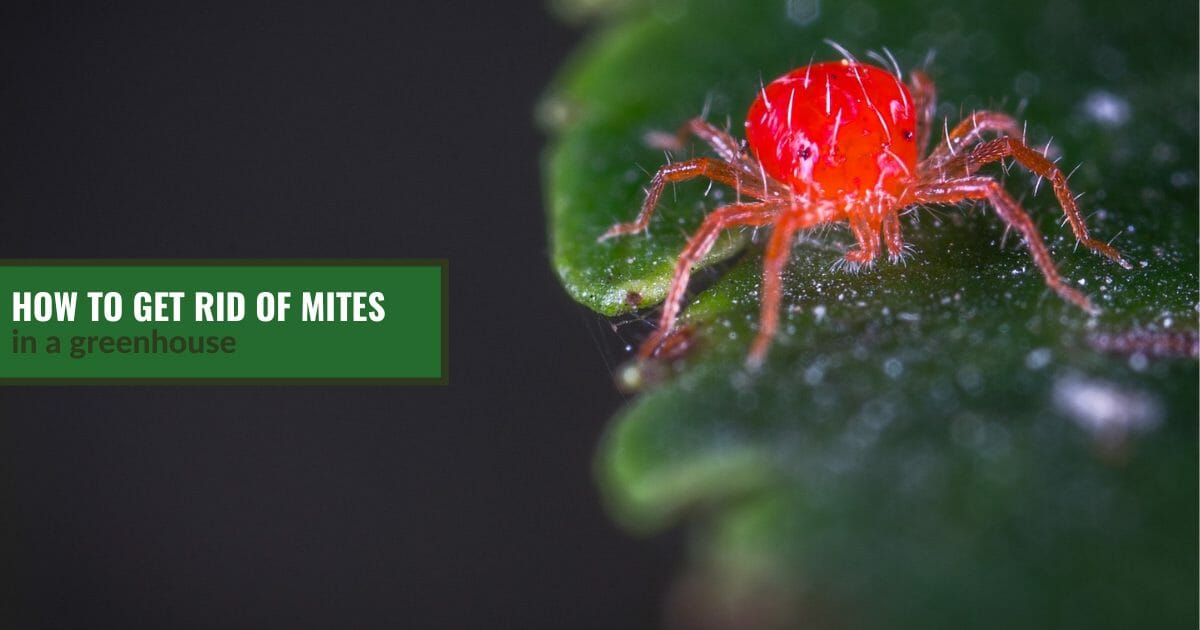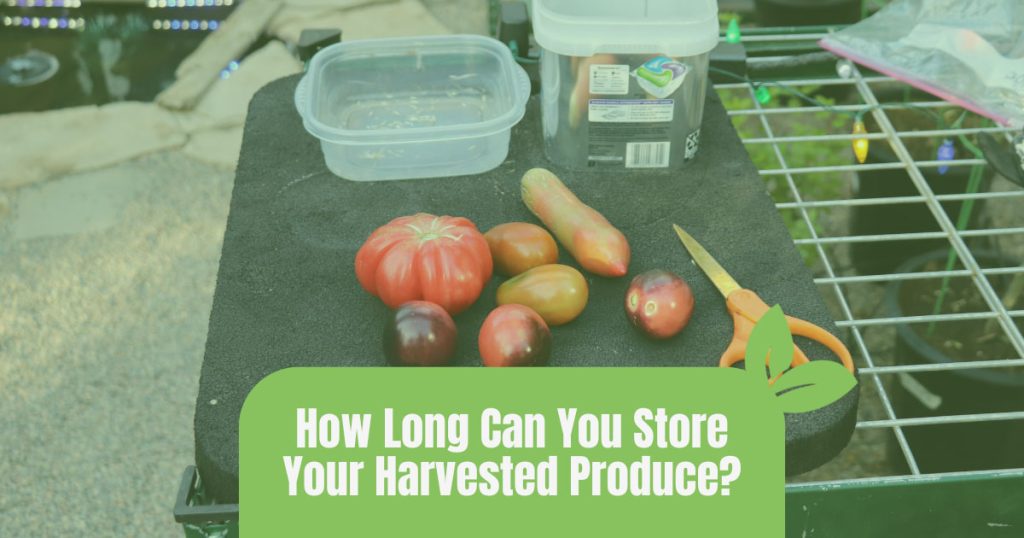



Although many pests can find their way into your greenhouse, many are relatively easy to manage. Mites, however, are particularly annoying because they multiply quickly, are difficult to spot, and can spread to many different kinds of plants. By the time they’re discovered, there’s usually already a large population feeding on the tender foliage of greenhouse plants.
While it may be tempting to rely on pesticides (called miticides), there are some natural ways to get rid of mites in greenhouses. Pruning damaged foliage, applying a soap solution, and introducing beneficial insects are just a few effective methods of control.
As a greenhouse gardener, it’s important you learn how to identify mites in the greenhouse and what species are most common. When you know what signs to look for, you have a better chance of spotting them early, and thus making it easier to get rid of them altogether.

3 types of mites that you may find in a greenhouse
Mites are small, eight-legged invertebrates that belong to the class Arachnida. Most species thrive in locations with high organic matter and moist conditions. Mites feed on plant material by piercing the outer layer and sucking the plant juices. This reduces plant vigor and can spread diseases and viruses from one plant to another.
Some species such as spider mites are easier to recognize because they leave wispy webbing on leaf tips and stems. Other signs of a mite infestation include galls, bronzing, and blistering on plant leaves.
Although there are thousands of different mite species, we’ll focus on three common garden mites and how to identify them.
1. Broad mite (Polyphagotarsonemus latus)
Broad mites thrive in the tropical conditions that are often mimicked in a greenhouse. As a result, they reproduce rapidly and can cause serious damage to ornamental and flowering plants including peppers, tomatoes, and more.
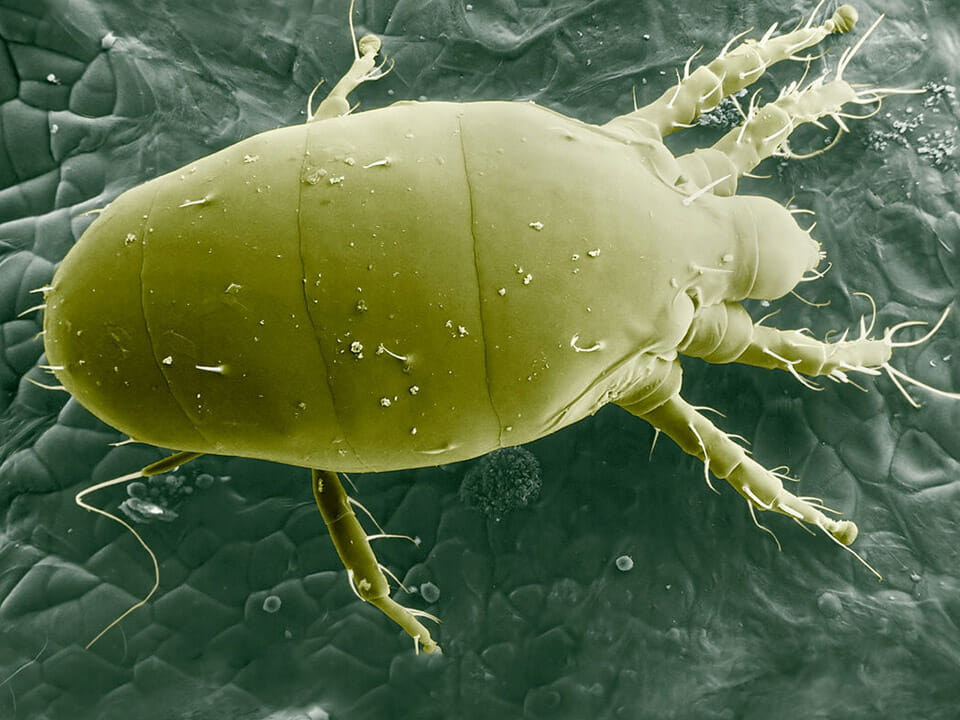
Almost impossible to detect with the naked eye, it’s hard to identify an infestation of broad mites until significant damage has been done to the plant. They are typically most active in the summer because they thrive on heat and low humidity levels, but they can survive and reproduce all year long in a greenhouse.
2. Spider mites
While there are many different kinds of spider mites, the three most common species include Carmine spider mite (Tetranychus cinnabarinus), Two-spotted spider mite (Tetranychus urticae) and the Lewis spider mite (Eotetranychus lewisi). All three species fall under similar classifications and have similar behavior patterns.
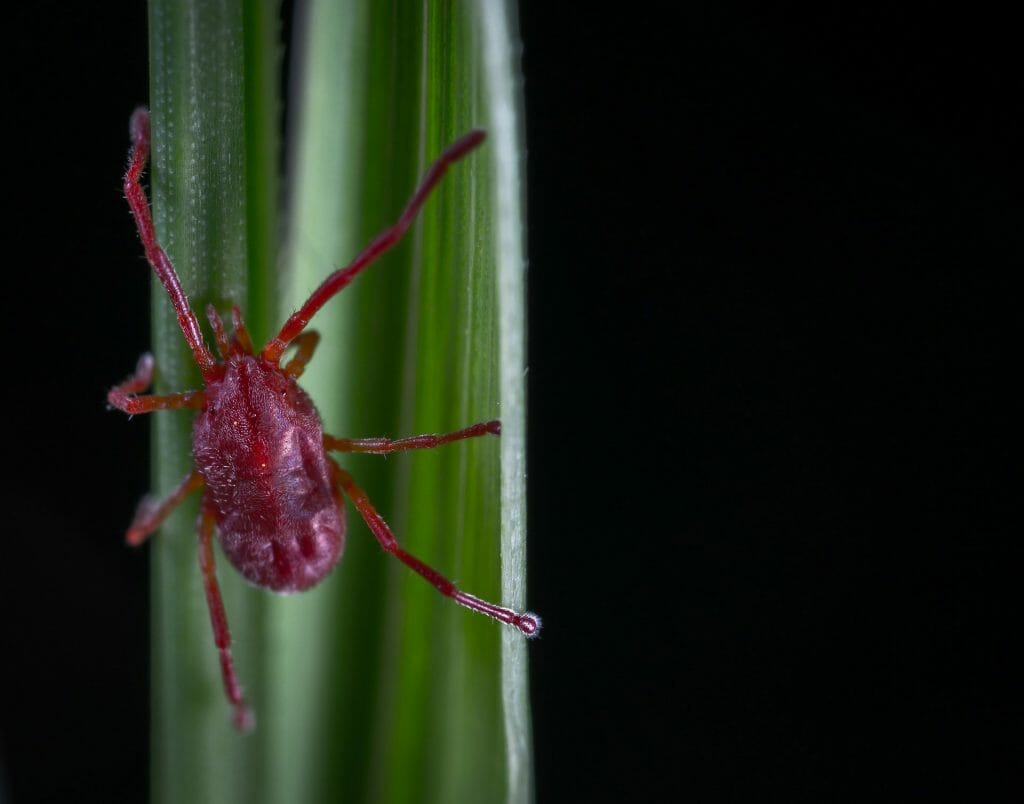
Like the broad mite, most spider mite species thrive in the warm conditions of a greenhouse. They puncture leaves to ingest a plant’s nutrients and can quickly infest a variety of plants. In addition to the damage they cause to the leaves, spider mites often spread disease from one plant to another.
Typically, the first sign of a spider mite infestation is tiny white or yellow spots appearing on plant foliage. You can also identify the presence of spider mites by the thin webbing they leave under the leaves or between stems.
3. Cyclamen mite (Phytonemus pallidus)
Cyclamen mites obtained their nickname because they are attracted to the Cyclamen genus of plants including African Violets, Begonia, or Snapdragons. However, they’ll also go for flowering plants such as strawberries, and as such can be a danger to the greenhouse garden.
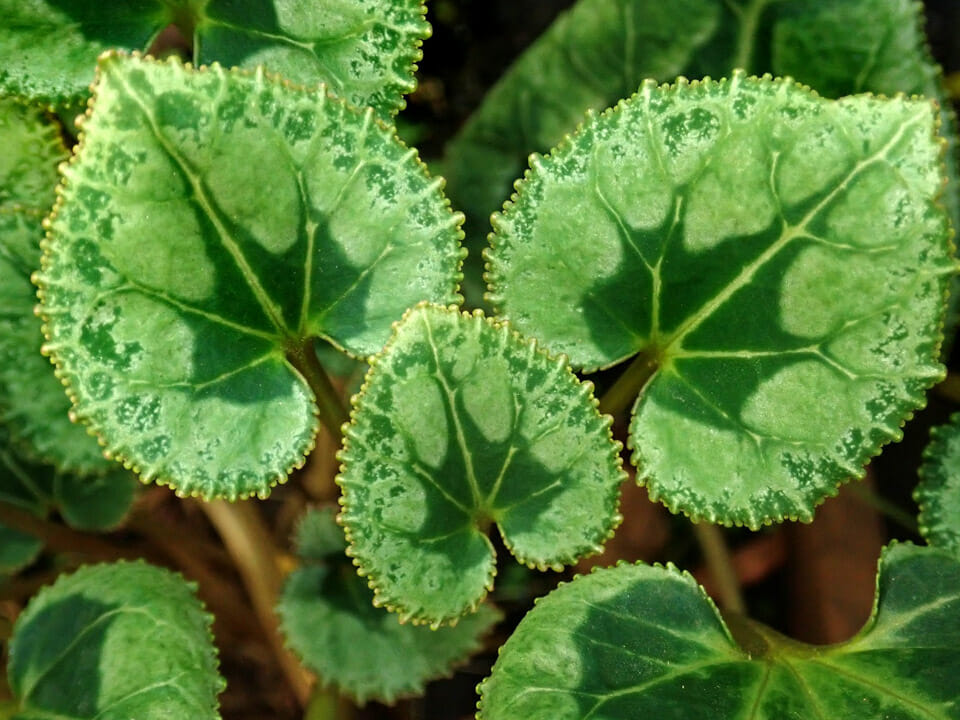
Like the broad mite, they’re often undetectable by the human eye. Due to their size, life cycle, and resistance to many common pesticides, the cyclamen mite can cause significant damage to your plants. Unlike most mite varieties, cyclamen mites prefer higher humidity levels.
How do mites get into your greenhouse?
There are many different ways that mites can infiltrate your greenhouse. The most common way that mites travel is on other plants, hitching a ride undetected on new plants that you bring in. They can also latch onto clothing, gardening gloves, tools, or pets.
How to get rid of mites in a greenhouse using natural methods
We usually can’t see mites with the naked eye, so unless you have a greenhouse microscope or loupe you’ll have to rely on plant symptoms to identify their presence. If your plants are showing signs of damage seemingly without explanation, you’re likely dealing with a mite infestation.
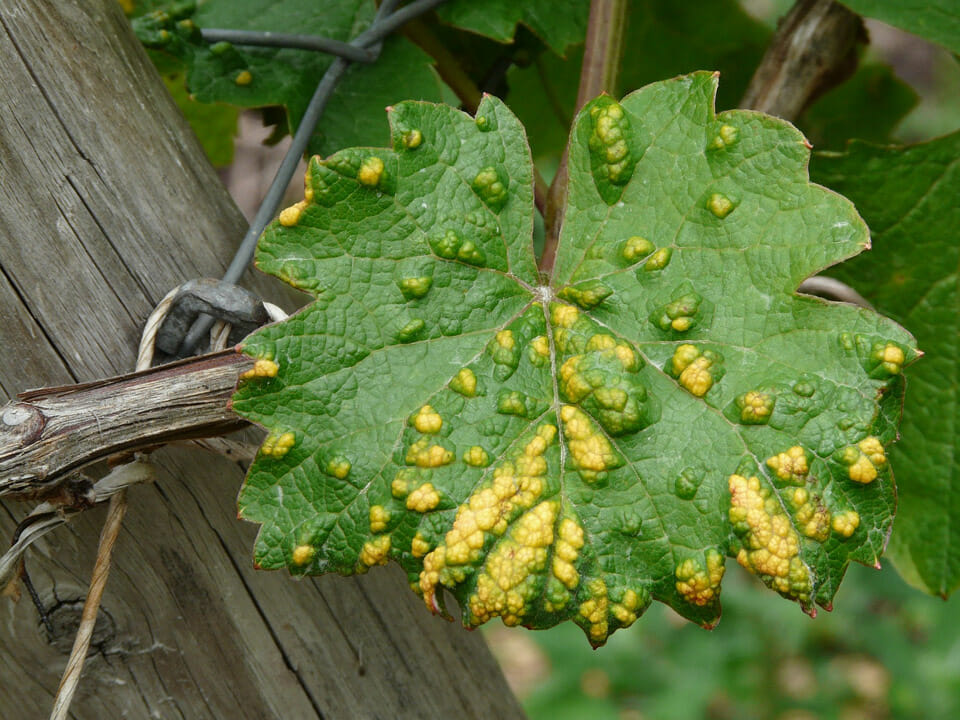
Whether it’s a single plant or the entire greenhouse, it’s important to immediately take steps to get rid of them and protect your plants from further damage. Fortunately, there are a number of natural methods that are effective and safe to use.
Isolate and prune foliage
If you suspect that any type of mite has infested your greenhouse, you should first isolate the plant(s) in question and prune foliage that is significantly affected. Discard that foliage in an airtight bag or container to prevent the mites from simply being dropped onto another plant.
If the affected plant has been planted directly into the ground or you cannot physically move the plant due to its size, you may be able to cover it with a clear bag to prevent the mites from spreading. If it’s unlikely that you can salvage the plant, sometimes it’s best to cut your losses and discard the plant altogether to protect the rest of your greenhouse.
Spray with water
Once you’ve isolated the affected plant, you’ll want to begin treatment to eliminate the mites. To be safe, you may also want to treat any nearby plants. First, spray down the plant with a strong stream of water to blast away any mites lingering on the leaves. Spraying with water also removes the build up of dust on leaves, making the conditions less desirable to mites.
This step may be tricky if the affected plant is rooted in the ground, as you may just send the mites flying in another direction. Moreover, mites tend to live on the undersides of leaves or inside flower buds, so this method should be followed up with at least one of the following methods:
Use natural oils
Many types of natural plant extracts can help you battle mites. Natural oils contain strong-smelling compounds that help repel or even kill dust mites. Some of the most effective oils to use include:
- Rosemary oil
- Cinnamon oil
- Mint oil
- Neem oil
- Garlic extract
- Clove oil

To apply these oils in your greenhouse, mix about 2 teaspoons of oil and a few drops of natural dish soap with a liter of water. Using a spray bottle, spray the mixture all over the affected leaves, making sure to coat the undersides of the leaves.
It’s best to do so in the evening, as the droplets can amplify the effects of the sun and cause sunburn. Before using oils as treatments, it’s always a good idea to research the particular plant you’re about to treat to ensure it won’t have an adverse reaction to the oil.
Use a soap solution
You can also treat your plant safely with a gentle dish soap. Diluting dish soap (3 tablespoons of dishwashing soap in a gallon of water) and spraying the mixture on affected plants will suffocate the mites.

However, some plants might not react well to dish soap, particularly those with hairy leaves that may hold onto the soap longer than necessary. You can reduce this risk by first testing a small section of the plant, or by diluting the solution even further.
Introduce beneficial insects
Beneficial insects are one of the most effective ways to get rid of mites in your greenhouse and ensure that they never return. Predatory mites, ladybugs, and lacewings are highly effective in getting rid of mites without harm to your plants.
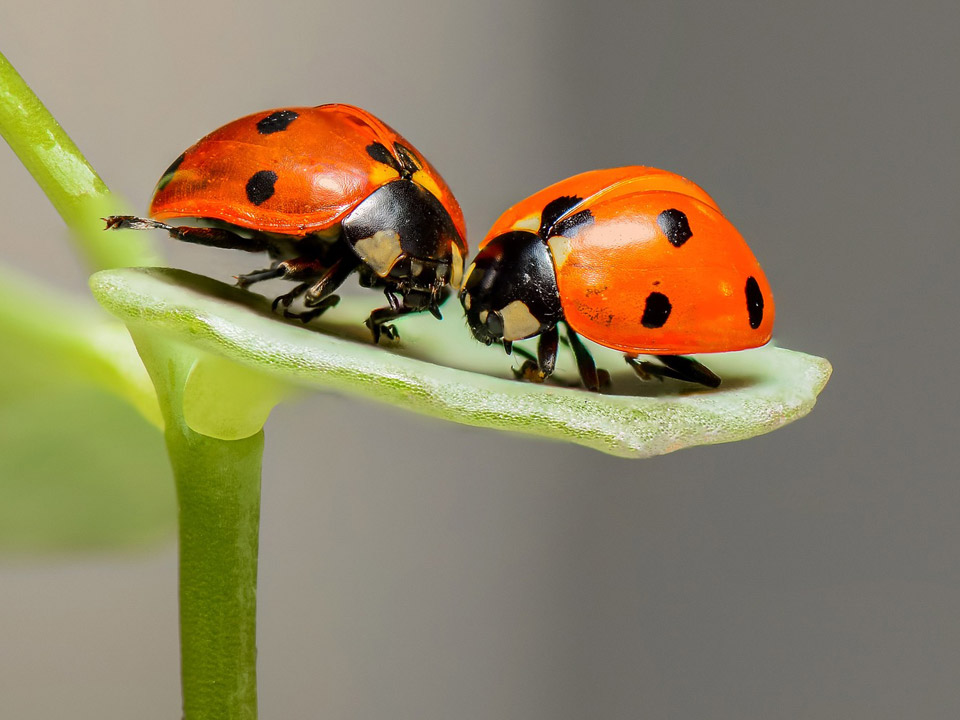
If you choose to introduce beneficial insects to your greenhouse, make sure that you don’t also treat your plants with oils or soap, as this may harm the beneficial bugs.
You can find beneficial insects at most garden supply stores, or order them online and have them shipped to you.
Repeat and prevent
Whichever method or combination of methods you choose to treat your greenhouse plants, it’s important to remain diligent and repeat the process as needed. You may also consider learning more about integrated pest management (IPM) since mites will often thrive undetected until there is significant damage.
Tips to prevent mites in your greenhouse
Once you’re no longer dealing with a full-on mite infestation, it’s important to take steps to prevent a future outbreak. While these tips on their own won’t get rid of the mites, they will help make conditions less attractive and reduce the likelihood of bringing mites into your greenhouse.
Inspect and isolate new plants coming into the greenhouse
When bringing a new plant into your greenhouse, it’s always a good idea to isolate and treat it as if it has a pest. This is especially important for plants coming from nurseries, friends, or stores, as you don’t know the conditions under which they were grown.
In fact, many plants may have mites in their early life cycle, even if there’s no visible signs of infestation. Isolating new plants and treating them for pests reduces the chance of mites spreading to the existing plants in your greenhouse.
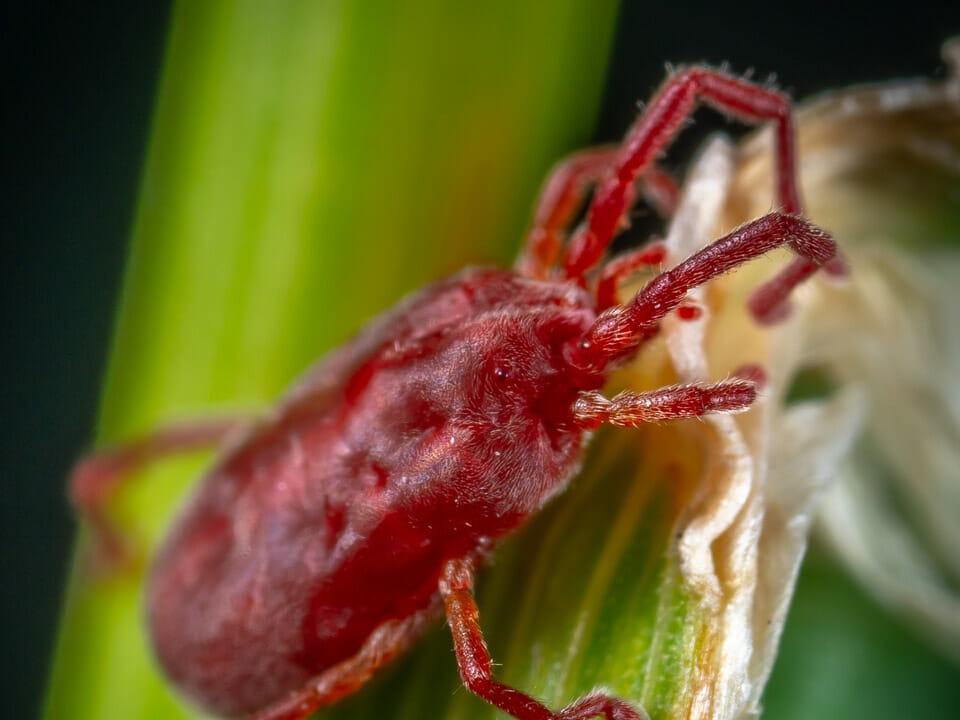
Create undesirable conditions for the mites
Most mites thrive in dry, dusty conditions, so spraying down your plants regularly will prevent the conditions in which mites typically thrive. Ensure that your greenhouse has great airflow and ventilation, particularly during the summer when the temperatures are hotter and there’s more risk of air becoming stagnant.
When it comes to humidity, balance is essential as conditions that are either too dry or too humid can attract mites. Water your plants appropriately, as water stress can attract mites and other pests.
Use a variety of treatment methods
One of the most important steps to good integrated pest management is using a variety of preventative and treatment methods. Regularly changing up your treatment methods prevents the mites from developing resistance to particular controls.
Of course, you can always introduce more beneficial insects in your greenhouse, but make sure you’re not inadvertently killing them, too!

